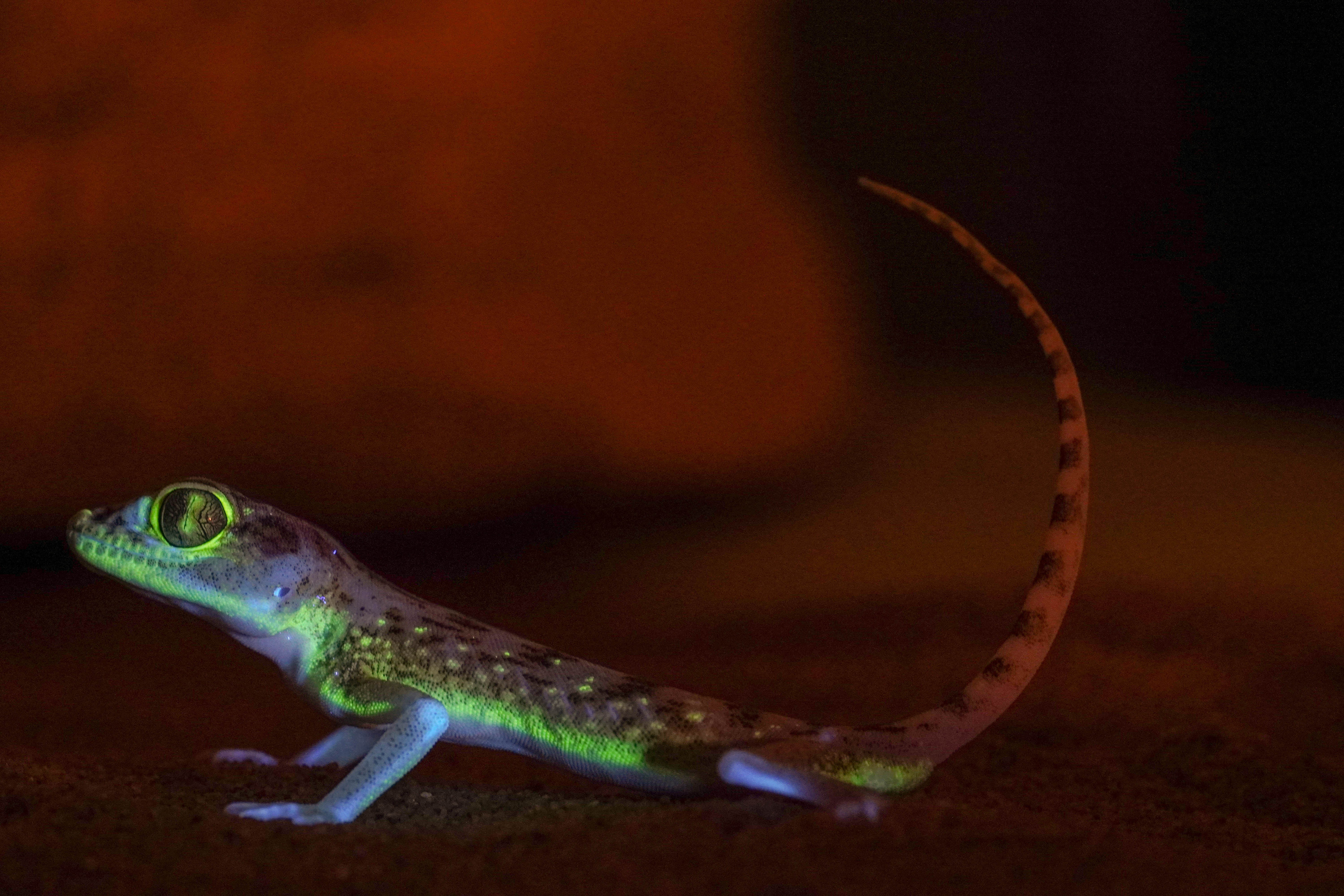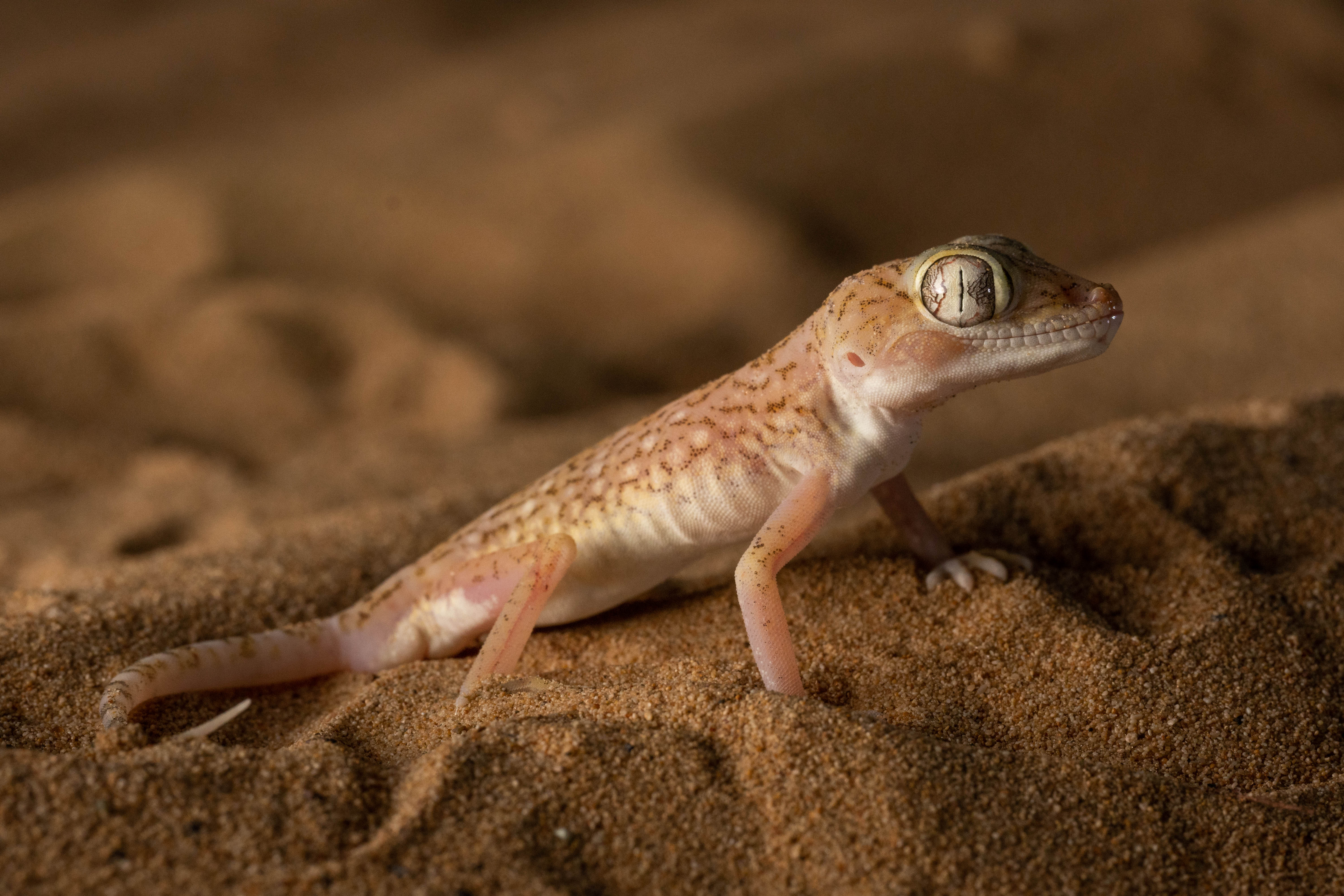Los gecos del desierto de Arabia iluminan la noche con su sorprendente fluorescencia
Los gecos del desierto de Arabia iluminan la noche con su sorprendente fluorescencia
Un equipo internacional liderado por investigadores del IBE ha descubierto que varios gecos del desierto de Arabia muestran una fluorescencia inesperada y vibrante en su piel.
Es probable que la fluorescencia de estas criaturas nocturnas ayude en el apareamiento y las interacciones sociales entre individuos en el vasto desierto, lo cual podría ser crucial para su supervivencia.
Este descubrimiento innovador destaca la singularidad y relevancia ecológica de la biodiversidad del desierto árabe.

Un equipo internacional liderado por el Instituto de Biología Evolutiva (IBE), un centro mixto del Consejo Superior de Investigaciones Científicas (CSIC) y la Universidad Pompeu Fabra (UPF), ha descubierto un fenómeno natural notable: varias especies de gecos que habitan el desierto muestran una llamativa biofluorescencia, brillando intensamente bajo la luz ultravioleta (UV). Este descubrimiento, publicado en la revista Journal of Arid Environments, no solo arroja luz sobre las adaptaciones únicas a entornos hostiles, sino que también abre la puerta a futuros estudios sobre las interacciones ecológicas y los rasgos evolutivos de estos habitantes nocturnos del desierto.
Durante numerosas campañas de campo en regiones como Sharjah, Al Ula y Nizwa en la península arábiga, los investigadores documentaron este comportamiento brillante en tres especies de gecos: el Geco de las Dunas (Stenodactylus doriae), el Geco de Arena del Este (Stenodactylus leptocosymbotes) y el Geco de Arena de Arabia de Manos Palmeadas (Trigonodactylus arabicus). La capacidad de fluorescencia, perceptible bajo luz ultravioleta, podría ser naturalmente visible para los gecos, que poseen una visión que abarca un espectro de luz más amplio que el de los humanos.

Los científicos han arrojado luz sobre los gecos del desierto de Arabia que resplandecen en la oscuridad. Crédito a Bernat Burriel.
Bernat Burriel, primer autor del estudio, anteriormente investigador predoctoral en el IBE y actualmente investigador en el Museo de Ciencias Naturales de Barcelona (MCNB), explica la importancia de los hallazgos: "Estos gecos no solo sobreviven, sino que prosperan en uno de los entornos más desafiantes del planeta, y su capacidad para brillar podría desempeñar un papel crítico en sus estrategias de supervivencia. Es fascinante cómo estas pequeñas criaturas muestran un rasgo tan llamativo para mejorar su comunicación y tal vez incluso su éxito en el apareamiento".
Esta biofluorescencia es particularmente notable porque parece haber evolucionado independientemente en estos gecos en comparación con otras especies fluorescentes conocidas, lo que sugiere una ventaja evolutiva significativa en su hábitat natural. "Anteriormente, se había observado fluorescencia en seis especies de gecos, pero solo una de ellas, el geco nocturno de patas de araña en el desierto del Namib en África, emite fluorescencia en su piel; el resto la emite desde los huesos. Este tipo de mecanismo puede ser muy útil para comunicarse en el vasto desierto", añade Burriel.

Geco de Arabia. Crédito Bernat Burriel.
La fluorescencia en la piel de los gecos de Arabia se encuentra principalmente en la parte inferior de su cuerpo, lo que puede ayudarles a ocultarse de los depredadores capaces de ver en el UV. Según Salvador Carranza, responsable del estudio e Investigador Principal del laboratorio de Sistemática, Biogeografía y Evolución de Reptiles y Anfibios en el IBE, "la ubicación de la fluorescencia, en la zona ventral o en los flancos en lugar de la espalda, probablemente sea una elección estratégica para minimizar la visibilidad ante los depredadores, al tiempo que permite la comunicación entre los gecos. Cuando se sienten amenazados, los gecos se presionan contra el suelo para ocultar estas áreas fluorescentes, lo que sugiere que son conscientes de la mayor visibilidad para los depredadores de estas areas", agrega Carranza.
Este descubrimiento sorprendente subraya aún más la importancia de las medidas de conservación para preservar la biodiversidad singular del desierto. "Comprender estos rasgos biológicos únicos nos ayuda a apreciar la complejidad de los ecosistemas desérticos y la resistencia de las especies que los habitan. También destaca la necesidad de desarrollar esfuerzos sostenidos de conservación para proteger estas criaturas excepcionales y sus hábitats naturales de las amenazas ambientales", concluye Carranza.
Artículo referenciado:
Burriel-Carranza, B., Talavera, A., Mochales-Riaño, G., Al Hashmi, S., Al Busaidi, A., Els, J., & Carranza, S. (2024). First record of dermal fluorescence in the desert-adapted Stenodactylus and Trigonodactylus geckos. Journal of Arid Environments. DOI:10.1016/j.jaridenv.2024.105161
